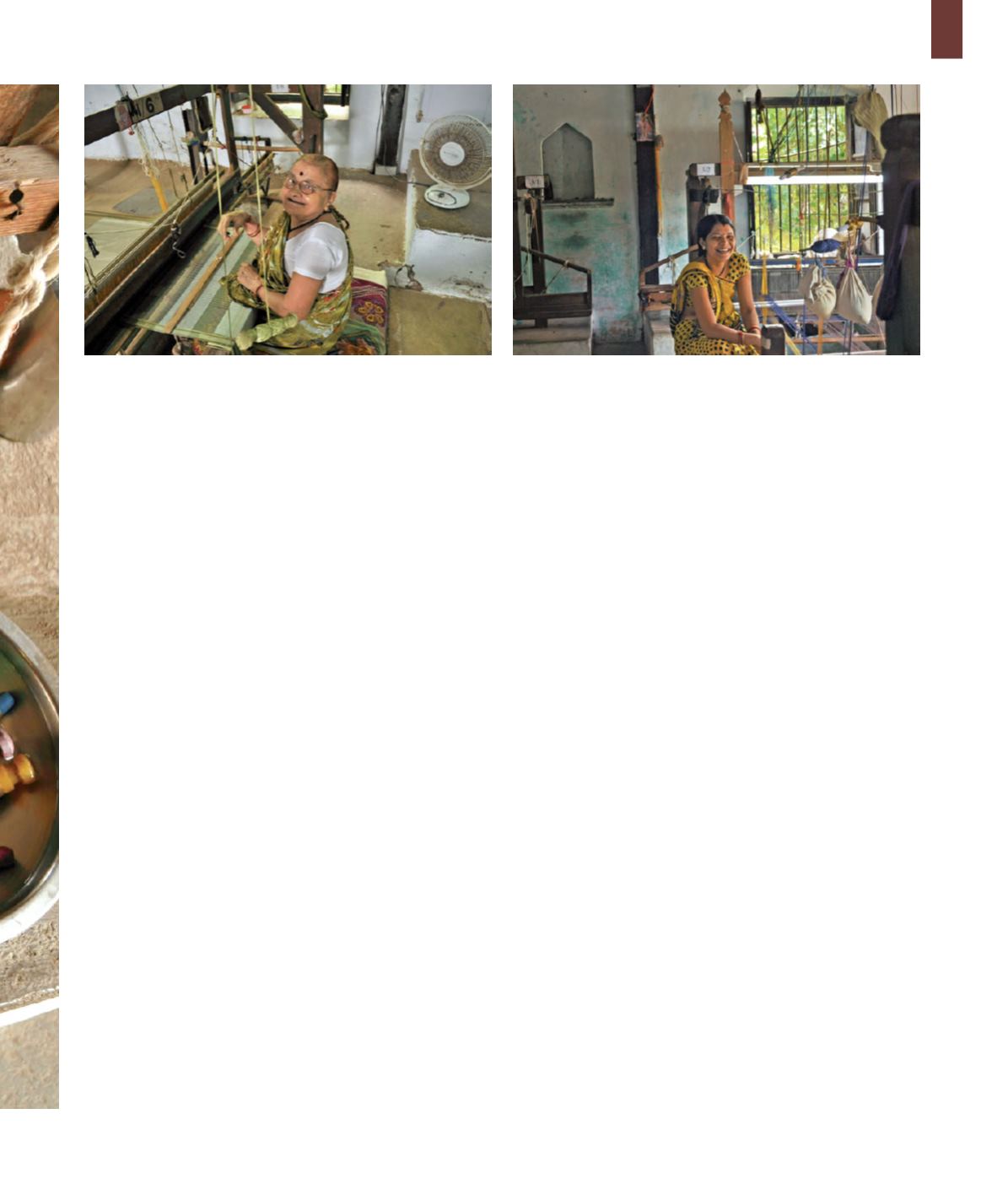
17
Ahilyabai reportedly also summoned skilled
weavers from Gujarat and today there still are
strong linkages between weaver families in
Maheshwar and Gujarat.
Post Ahilyabai
After Ahilyabai’s reign, the capital of Indore
Princely State shifted to Indore. In that period
Maheshwari sarees were still nine yards long. Nine
yards accommodated the stately Maratha-style of
saree, wrapped around the body, pulled between
the legs, pleated and then draped across the chest,
and finally cascading over the shoulder and down
the back in simmering gossamer elegance.
Such a saree was called a
lugda
in local parlance;
and women amongst the Maratha state royalty,
took pride in the elegant fan of pleated fabric
trailing between their feet as they moved through
pujas or parties, like graceful peacocks.
Prior to Independence in Princely State times,
Maheshwari sarees were of pure cotton: warp and
weft. As Maheshwar held a special place in the
hearts of Indore’s rulers, their Maharajas saw to it
that the finest counts of imported cottons came
into their weavers’ hands. So the royal Maheshwari
sarees was often woven with imported Egyptian
cotton threads.
As the Indore of those days was a sovereign
state, there was no restriction on imports. So, at
times, the
jari
, or fine golden threads, used both as
borders and as
butis
, came from Lyon, in France.
In fact, in the late 1970s, I saw an old, old plaque
in a Master Weaver’s office in the Maheshwar
bazaar
read, “Pure golden threads; Lyon” that was
embroidered proudly on a piece of silk, framed
and hung on his wall.
Fine cotton sarees probably changed
to cotton silk sarees sometime in the late fifties or
early sixties. Technical challenges drove the master
weavers of Maheshwar to cease using cotton in
their warps and to substitute it with much stronger,
fine count imported Chinese silk – known locally
as
thani
. This new texture came to be known as
Maheshwari
neem reshmi
sarees. The objective of
discarding the fine cotton warp was a practical
labour-saving idea; but it changed the nature of
Maheshwari sarees forever.
Weavers no longer had to deal with the headache
of sizing (strengthening) a fine cotton warp with a
thick paste of
johar
(sorghum) flour nor would they
need to bother with constantly repairing broken
cotton warp threads because new Chinese silk was
so much stronger. Maheshwar’s weavers could now
earn a bit more money for far less effort and time.
But I personally have always felt that the original
fine pure cotton saree was a more durable and
elegant textile.
As Maheshwar weaves were relatively simple;
Maheshwar’s looms too have traditionally been
very basic. Their flimsy mud houses and wooden
beams could not support the heavy jacquards
which sat easily in the stone weaver homes of
Chanderi, where the weavers could produce their
elaborate extra warp and weft designs.
Until very recently, Maheshwar looms had only
two treadles, two shafts and very simple dobbies.


